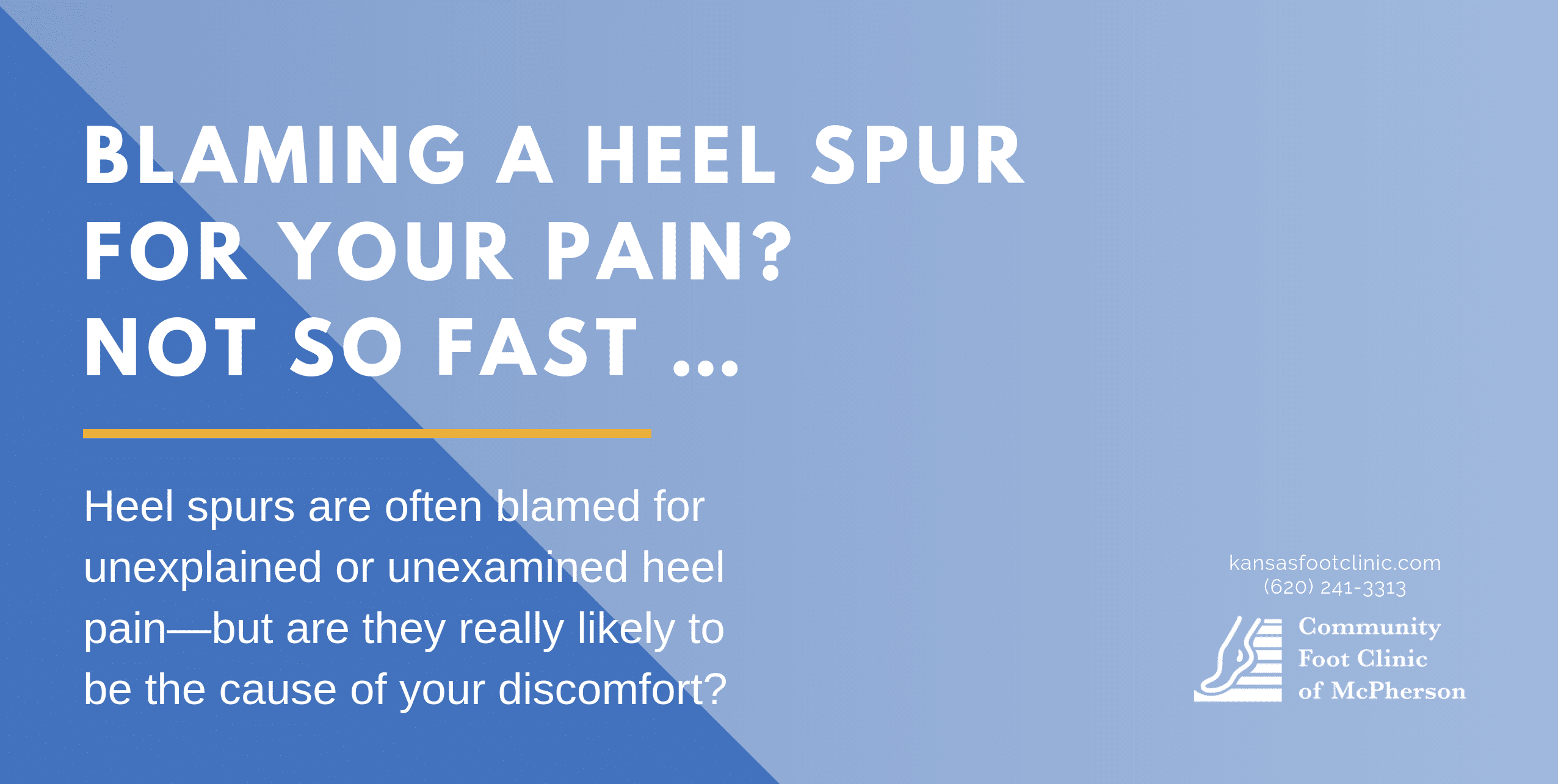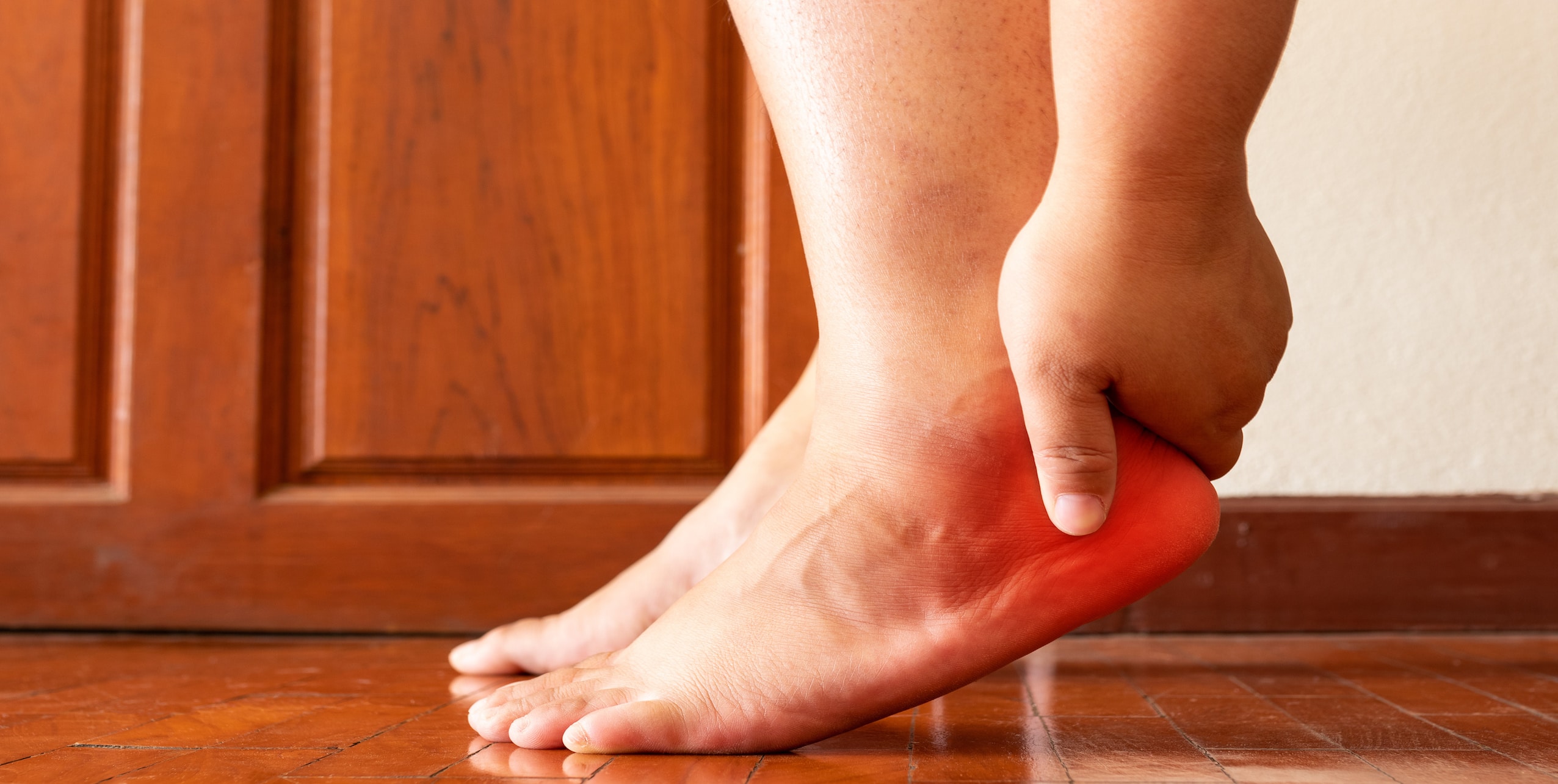Blaming a Heel Spur for Your Pain? Not So Fast …
Nobody likes to be accused of a crime they didn’t commit.
You might have learned that yourself as a young kid—perhaps when a schoolmate or sibling fingered you for a broken vase or swiped candy bar. And what about that time a few months ago when your colleague dropped the ball on a big project and you got the blame?
Well, if there’s one foot or ankle condition that’s more likely than any other to be unfairly blamed for pain that it isn’t really responsible for, it has to be heel spurs.
Heel pain, after all, is probably the single most common symptom experienced by those who visit our office. And quite often, “heel spurs” is the first thing they mention as a possible explanation.
But the truth is that, while heel spurs can cause pain on their own in some cases, they’re not even really all that close to the top of the list when it comes to the most likely explanations!
So what’s really going on? Let’s investigate, shall we?

So What Is a Heel Spur Anyway?
A heel spur is a type of bone spur that develops on the surface of the heel bone—also known as the calcaneus. These spurs are made from hard deposits of calcium that get left on the underside of the heel bone, on the side closest to the arch. Spurs can reach a half inch in length or longer!
What Causes Them?
Spur formation is, essentially, part of your body’s natural efforts to repair or compensate for a long-term soft tissue injury.
In other parts of the body, such as the hip or knee, osteoarthritis is usually to blame for bone spurs. The cartilage in the joint wears down, and the body attempts to “fill in the gap” by creating new bone.
But for heel spurs, the main underlying cause is plantar fasciitis—the true most common form of heel pain in adults.
In this condition, tearing and inflammation in the plantar fascia (the tough band of tissue that runs across the bottom of your foot) causes it to “pull away” from the spot where it attaches to the heel bone. If you suffer from plantar fasciitis for an extended period of time, a heel spur may start to grow.
It Sure Seems Like a Half-Inch Long Bone Spike in My Foot Would Hurt …
You’d think so, wouldn’t you?
In fact, that’s what many doctors believed many years ago, and surgical removal of heel spurs was much more common than it is today. Since heel spurs develop in up to half of all cases of plantar fasciitis—and many people tend to put off seeing the doctor until pain has been around for a while—it was a common (albeit incorrect) conclusion that spurs cause plantar fasciitis, rather than the other way around.
But the actual truth is that pain directly caused by heel spurs is relatively rare. It’s estimated that about 1 in 10 or so American adults have a heel spur due to a current or previous case of plantar fasciitis or other soft tissue injury in the feet. But of that group, only about 5 percent (1 in 20) experiences pain specifically associated with their spur.
You don’t actually have any feeling in your bones themselves, of course, and there’s not much joint motion where the spur is located. Intermittent pain from heel spurs is possible, particularly during exercise, if the spur is pushing against something sensitive. But most people have no symptoms.
So What Is Causing My Heel Pain?
Well, this is the part where we have to say that every case is different, and that we would of course perform a thorough evaluation to confirm any diagnosis.
But having said that, whether or not you actually have heel spurs in the first place, the odds are very high that your heel pain is being caused by the soft tissue injury (likely plantar fasciitis) that formed the spurs in the first place.
That’s good news, for a couple of reasons. Plantar fasciitis—even very severe cases—can almost always be treated through conservative treatments available from our office, such as custom orthotics, physical therapy, strapping, night splints, laser therapy, or cortisone injections.
And once the plantar fasciitis has been treated, the vast majority of patients with heel spurs do not experience any further painful symptoms. And that means any kind of surgery to remove the spurs is almost never necessary.

Let Us Get to the Bottom of Your Heel Pain
It’s time to stop playing the blame game and get some real answers for your heel pain.
At the Community Foot Clinic of McPherson, Dr. Trent Timson provides thorough examinations and a wide variety of treatment options to successfully address whatever condition (or conditions) may be causing your discomfort.
We believe in personal attention and personalized care. Each situation and person is different, so we always tailor our treatment protocols to address your specific needs—not only in regard to your condition, but your lifestyle and goals as well.
So stop cursing your “heel spurs” and get examined and treated! To schedule an appointment with us at one of our convenient office locations, just give us a call at (620) 241-3313.
McPherson Office
316 W. 4th Street
McPherson, KS 67460
P: (620) 241-3313
F: (620) 241-6967
© Community Foot Clinic of McPherson. All Rights Reserved.
Privacy Policy | Terms & Conditions
Web Design by CP Solutions
Marketed by VMD Services
